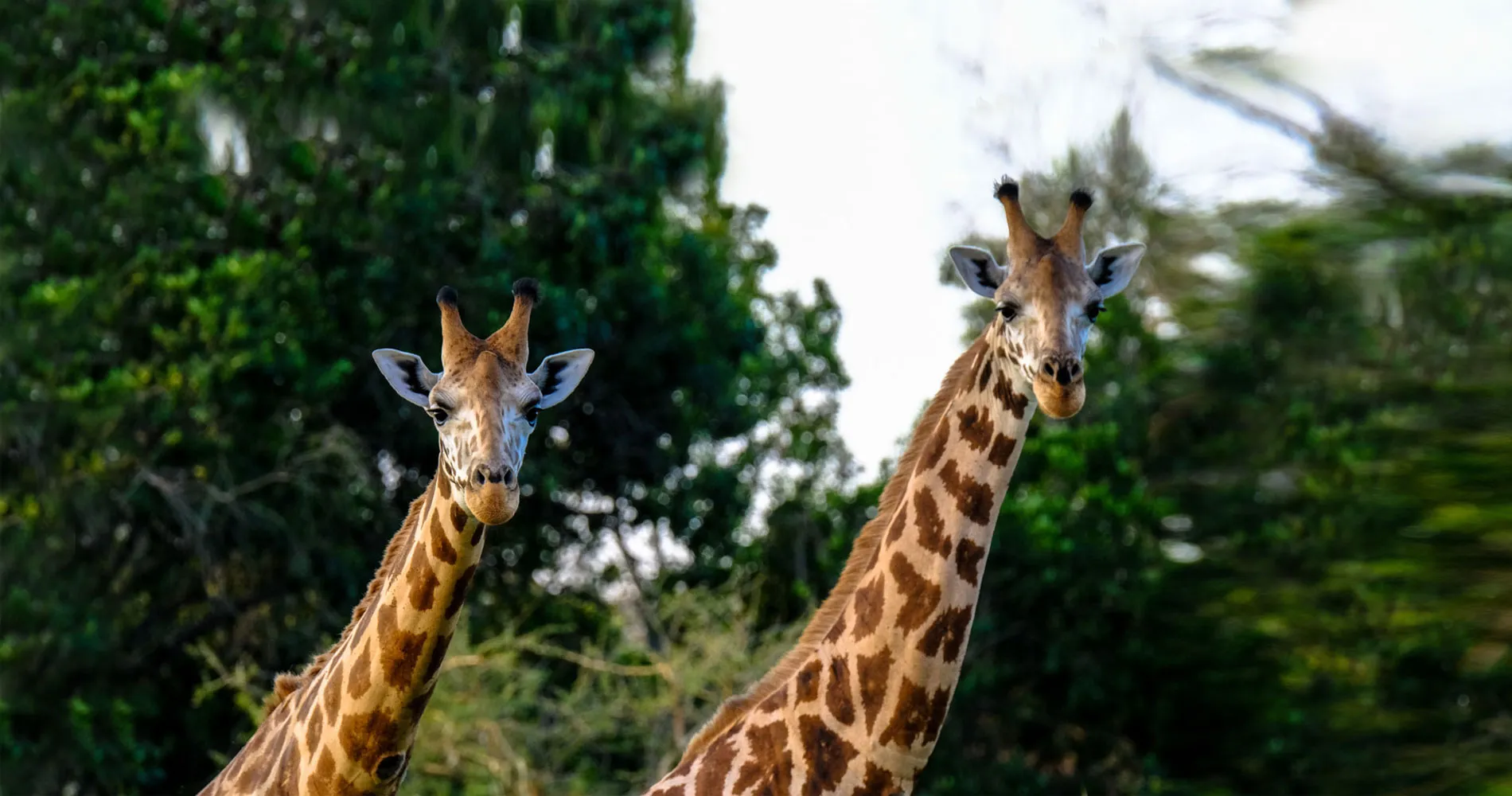On 20 November 2024 the US Fish and Wildlife Service has proposed to include four subspecies of the giraffe on the list of the US Endangered Species Act. Giraffes are silently disappearing from the Earth and humans are responsible for this. Whether it be the expansion of settlements and infrastructure, Africa’s charcoal industry or poaching or climate change, the steady decline in giraffe populations has reached alarming levels. The international trade in bone carvings, skins and trophies has added to this alarming trend.
Daniella Vanova
10 December 2024
Arabic version | Chinese version | French version | German version
The giraffe, the world’s tallest mammal and an African icon, is quietly slipping towards extinction with alarmingly little public attention. Despite their towering presence and unique characteristics, giraffes are often overlooked.
When Marius, a male giraffe born and living in the Copenhagen Zoo was killed by the zoo on 9 February 2014 because they deemed him unsuitable for captive breeding, the world was shocked. Not only was Marius a healthy giraffe, there had been several offers by organizations and individuals to save his life through adoption. Marius was the fifth giraffe to be killed for “conservation management” reasons.
According to the Humane Society of the United States there are fewer than 69 000 mature individuals remaining in the wild. Giraffe populations have dropped nearly 40%.
The International Union for Conservation Nature (IUCN) Red List classifies the entire species as vulnerable. The IUCN listed several subspecies of giraffe as critically endangered in 2018.
Giraffes are listed on Appendix II of the Convention on International Trade in Endangered Species of Wild Fauna and Flora (CITES). This means that they are considered threatened, but not necessarily threatened with extinction. If trade in giraffe parts is not strictly regulated, this could change.
The US, the only country that collects trade data on giraffes, has data showing that almost 40 000 giraffe items were traded into the US in just one decade (2006 to 2015). During this period at least 3751 individual giraffes were killed for trade to import into the US 21 402 bone carvings, 3008 skin pieces and 3744 hunting trophies.
A major issue is the lack of awareness of facts surrounding giraffe population decline which is driven by habitat loss, poaching, and climate change. The giraffe’s plight is a stark reminder of the urgent need to broaden conservation efforts and bring much needed attention to the silent struggle of these gentle giants.
According to the IUCN, the giraffe’s population across the African continent decreased by 40 percent between 1985 and 2015. In roughly three decades, in Kenya, Somalia, and Ethiopia, populations fell to 60 percent.
The Nubian giraffe meanwhile has suffered a tragic decline of 97 percent, pushing this rarer variety closer to extinction. Further afield in Central Africa, the Kordofan giraffe, another subspecies, has witnessed an 85 percent decrease.
In Central and Eastern Africa, the animals are poached for their skin, brains, and bone marrow. According to a 2010 paper written for the Rothschild Giraffe Project, some people in Tanzania believe that giraffe body parts can cure victims of HIV-AIDS. A claim which has not been substantiated by science.
Another primary concern is their slow reproductive rate. Female giraffes have long gestation periods of around 15 months and typically give birth to one calf at a time. Calving intervals can be several years apart, which limits population growth, especially given that young giraffes experience high mortality rates due to predators and environmental factors.
These vulnerabilities are compounded by the strong family bonds within giraffe groups which are increasingly under threat. These social units are essential for their survival and well-being. Disruption of these groups due to environmental pressures, loss of habitat and hunting/poaching only exacerbates the challenges they face in growing and sustaining their populations.
Habitat loss outside protected areas remains the main reason for the recent decline in giraffe numbers. The expansion of human settlements, along with associated infrastructure like waterholes and roads, reduces and fragments their natural living spaces, making it harder for giraffes to find adequate food and safe areas to raise their young. Africa’s rapidly growing charcoal industry, which drives deforestation in many regions, is another major contributor to habitat loss for giraffes.
The Center for Biological Diversity, Humane Society International and the Humane Society of the United States petitioned for more protections for giraffe populations in April 2017. In October 2021, the US Fish and Wildlife Service committed to a deadline to decide whether the species warrants protections.
In response to this petition and the 2017 lawsuit, the US Fish and Wildlife Service on 20 November 2024 proposed listing four species of giraffes as under the Endangered Species Act. This inclusion will help crackdown on poaching activities and stop the trade in giraffe rugs, pillowcases, boots, furniture and even Bible covers. The US is a major market for these items.
Martha Williams, Director of the US Fish and Wildlife Service, stated that “federal protections for giraffes will help protect a vulnerable species, foster biodiversity, support ecosystem health, combat wildlife trafficking and promote sustainable economic practices,” adding that “this action supports giraffe conservation while ensuring the United States does not contribute further to their decline.”
The new US Fish and Wildlife Service action will include three subspecies of northern giraffe, living mainly in Cameroon, Chad, Niger and Uganda, as endangered. The population of these subspecies has plummeted by 77 percent since 1985 to 5 919 individuals. A further two subspecies in East Africa, the reticulated and the Masai giraffes, are set to be listed as threatened, which is one step below endangered status. The proposed listings will be finalized within a year. The Fish and Wildlife Service has set a deadline of 19 February 2025 for review and public comment before publishing a final rule.
Once these listings are finalized, permits will be required for giraffe part imports into the US. This will greatly help conservation efforts to curb trade in giraffe parts. This in turn will hopefully help giraffe populations recover from the brink of extinction.







